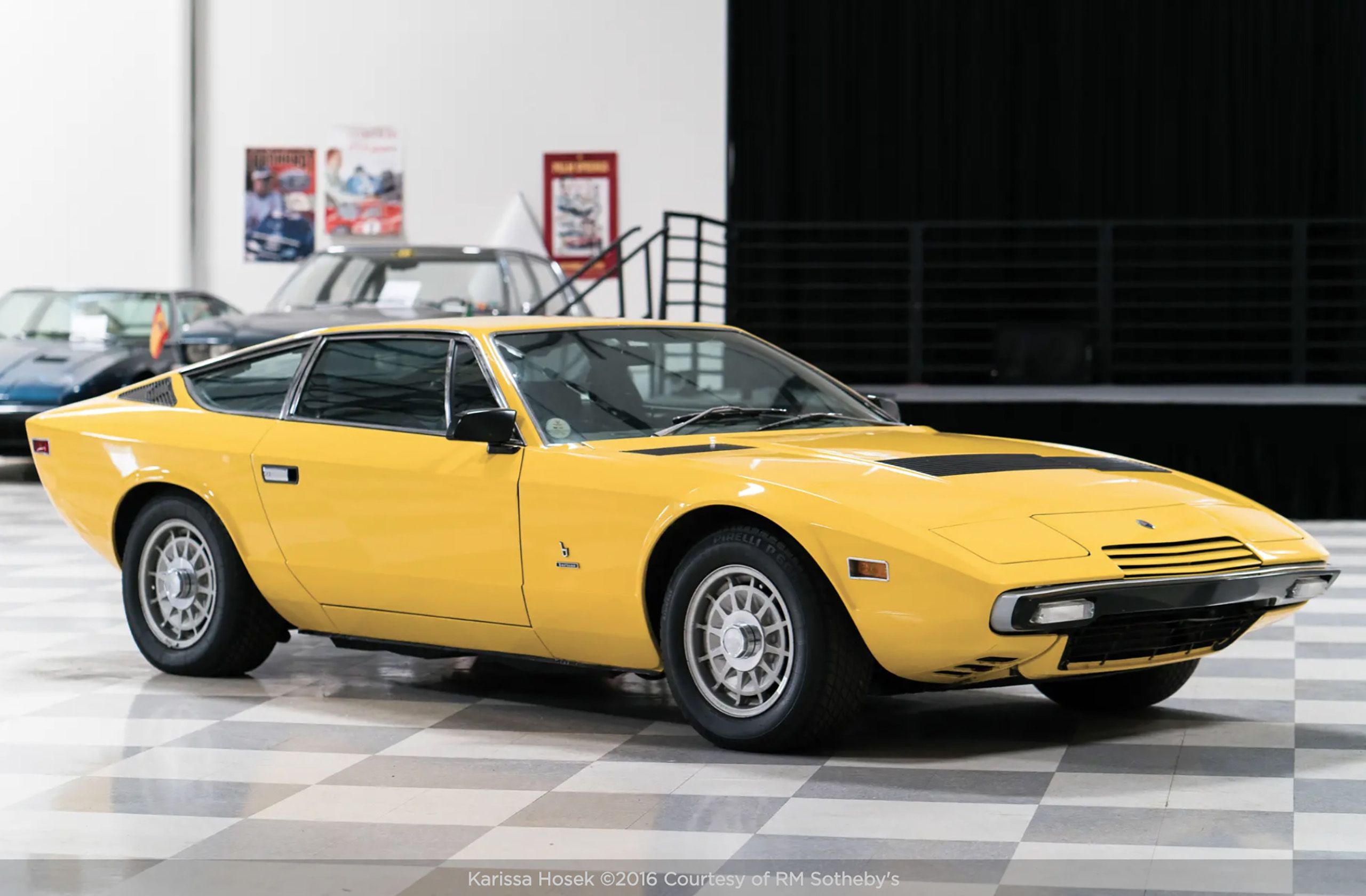Last of Maserati’s “Windy” GTs
Like fellow Italian exotic car maker Lamborghini, Maserati hit head winds in the late 1970s as economic issues and rising fuel prices took bites out of the exotic car segment. Speaking of winds, Maserati would issue its final front-engine GT of this period, the Khamsin, using the Egyptian name for a mediterranean windstorm. (The Maserati Ghibli took its badge from the Libyan name for the same kind of windstorm.)
The Khamsin would be a rare model, with just around 430 made and less than a third of those sent to the U.S. market. It was still a significant car in Maserati’s history, blending elements from two distinct periods in the company’s ownership. Namely, the 4.9-liter V8 was descended from a 1950s Maserati racing engine, and hydraulic steering and other assists came from French carmaker Citroën, which owned Maserati from 1968-1975.
Today’s Maserati Gran Turismo owes a debt to cars like the Khamsin. Let’s take a closer look.
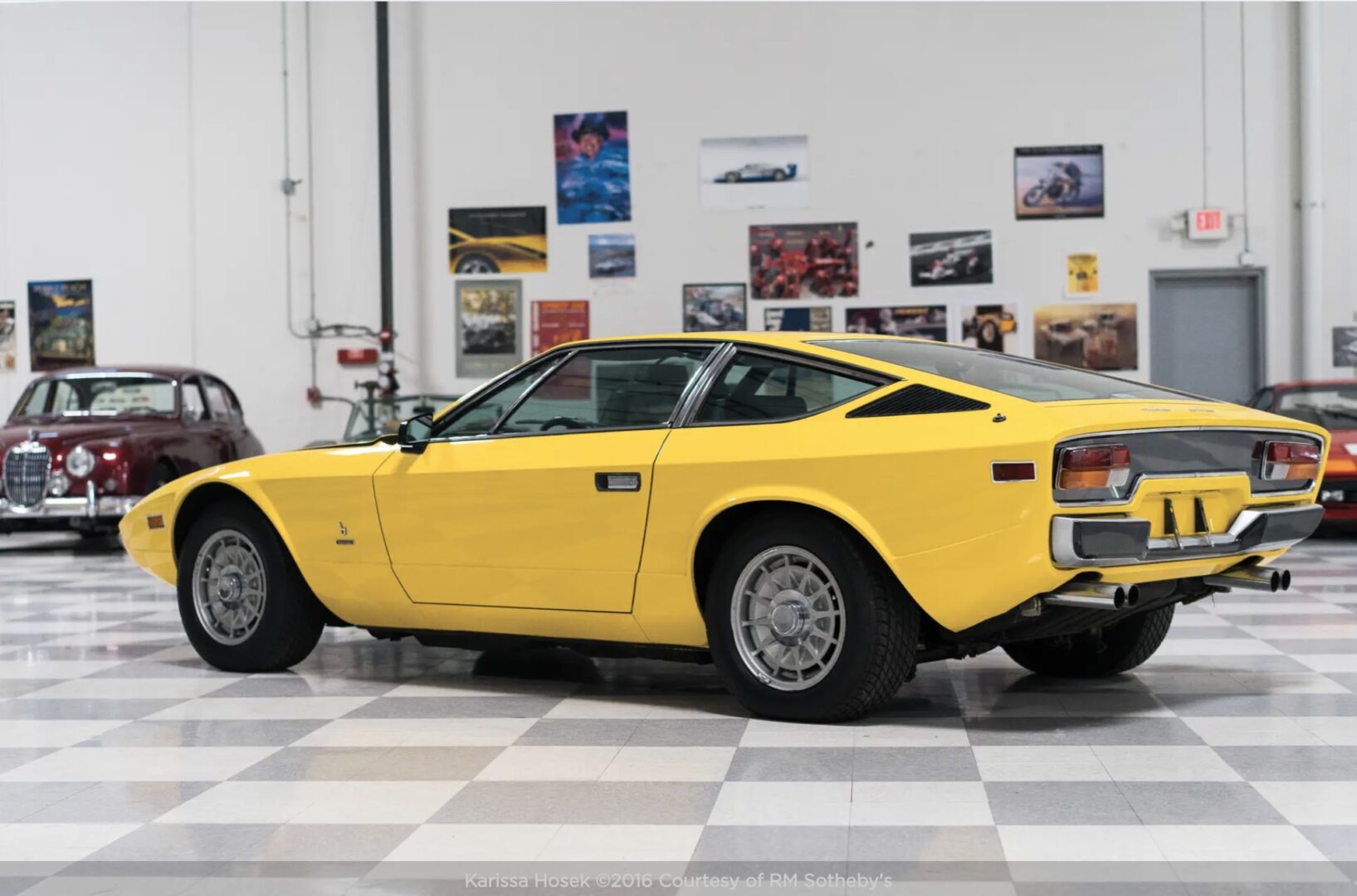
One for Two
Under Citroën’s control, Maserati began to modernize its model line for the 1970s. The 1971 Bora was a stunning mid-engine flagship in a body drawn by Giorgetto Giugiaro’s independent firm, Ital Design. A milder version of that car, the Merak, used a V6 engine that had been Citroën’s reason for buying Maserati in the first place. Citroën needed the snarling V6 to power its own flagship GT, the future-forward SM.
Meanwhile, Maserati still had the front-engine Ghibli two-seater, the slightly larger Indy 2+2 that debuted in 1969, and the utterly elegant Mexico four-seat luxury coupe. All were powered by the classic Maserati V8 but still featured the somewhat archaic leaf-sprung solid-axle rear, a setup not unlike that used on American sport coupes like the Ford Mustang and Chevy Camaro.
The Ghibli and Mexico were coming to the end of their roads for 1972, and the Indy was headed for a 1975 departure. Enter the Khamsin. The Khamsin design prototype made its public debut on Bertone’s stand at the 1972 Turin Motor Show, and the production-ready model appeared at the Paris Motor Show in March 1973. Regular production started the following year. Of course, “regular production” for Maserati in those days was a relative term for these hand-built cars.
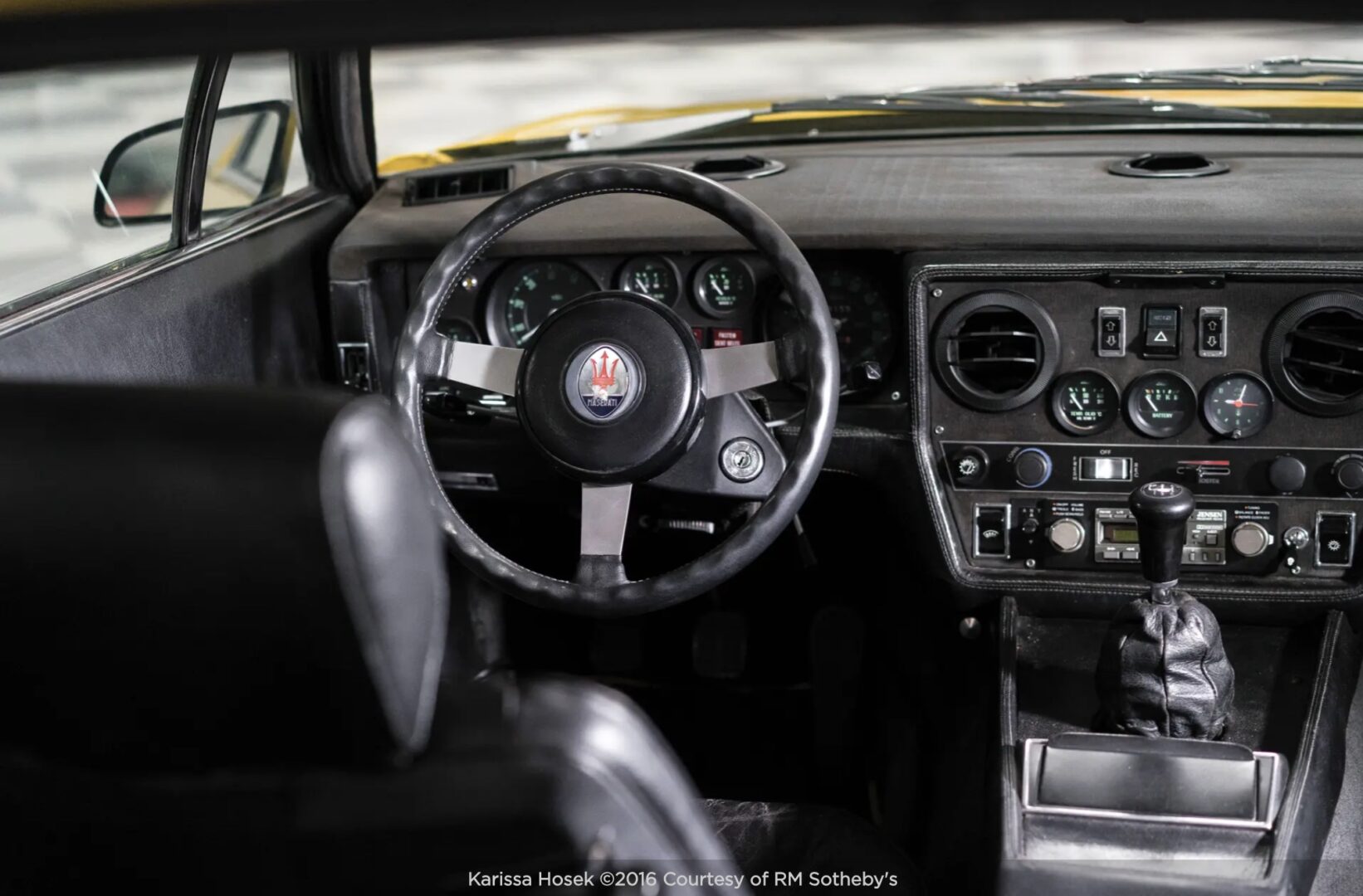
A Gandini Stunner
The new GT was the first Maserati designed by Carrozzeria Bertone, with the actual design from the hand of Marcello Gandini, whose illustrious portfolio also included the Lamborghini Miura, Espada, Jarama, and Countach; the Alfa Romeo Montreal, Lancia Stratos, and many more great cars.
Gandini’s design for the Khamsin reflected his gravitation toward wedge themes while also continuing a strong family resemblance to the Ghibli it replaced. There were some modernizations, however. Setting the V8 far back in the unitized chassis/body structure gave the Khamsin a desirable 50:50 weight distribution and allowed the spare tire to fit up front, beneath the radiator. That in turn , which gave more luggage space under the glass rear hatch.
Though its wheelbase was essentially the same as the Ghibli’s at 100.4 inches, the Khamsin was a foot shorter at 175 inches. The smaller Khamsin’s +2 rear seating was a bit of a useless mirage, a ploy to enable some customers to justify the purchase, perhaps.
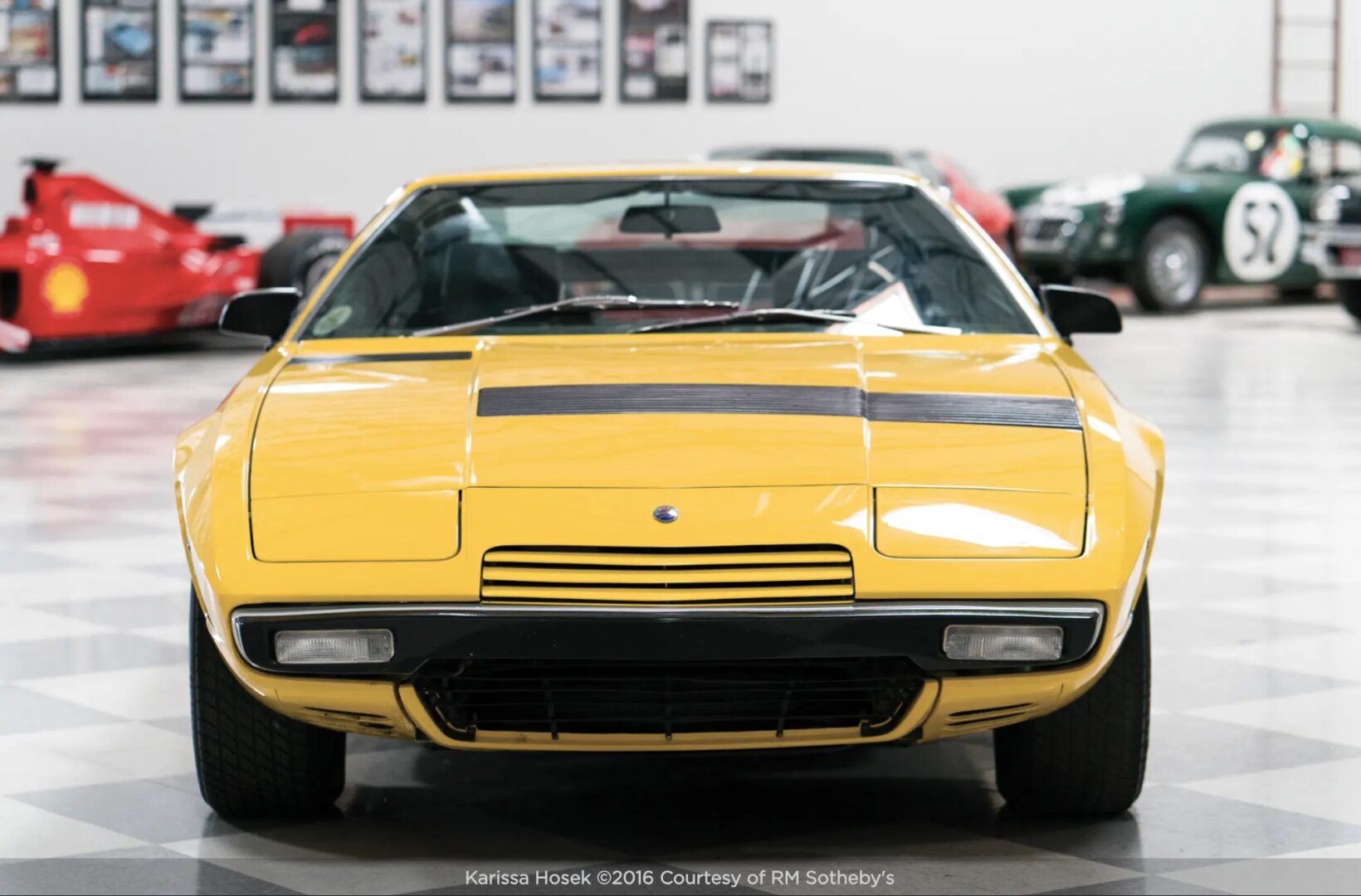
Maserati Through the Looking Glass
One of the most intriguing design elements was both striking and practical. Before the age of reversing cameras, exotics had long been known for poor outward visibility. The Khamsin had its taillights mounted in a vertical clear glass panel, through which the driver could more easily view objects behind it when reversing. Gandini had previously used the idea on the Lamborghini Espada, and Honda adopted it for the spunky CRX sport coupe in the 1980s.
There was bad news for U.S. buyers, though. To meet federal bumper and lighting standards, Khamsins sold here had to use protruding, ugly black bumpers. Worse, the regulators insisted that the taillights not be mounted in the rear glass panel, and so Maserati had to move them below it. The result was not pretty and looked like a mistake.
The car illustrating this story, which is an original, unrestored U.S. model, had been converted to the European-spec bumpers and lights by a previous owner, the Riverside International Automotive Museum. Gandini, who died in March 2024, would have heartily approved.
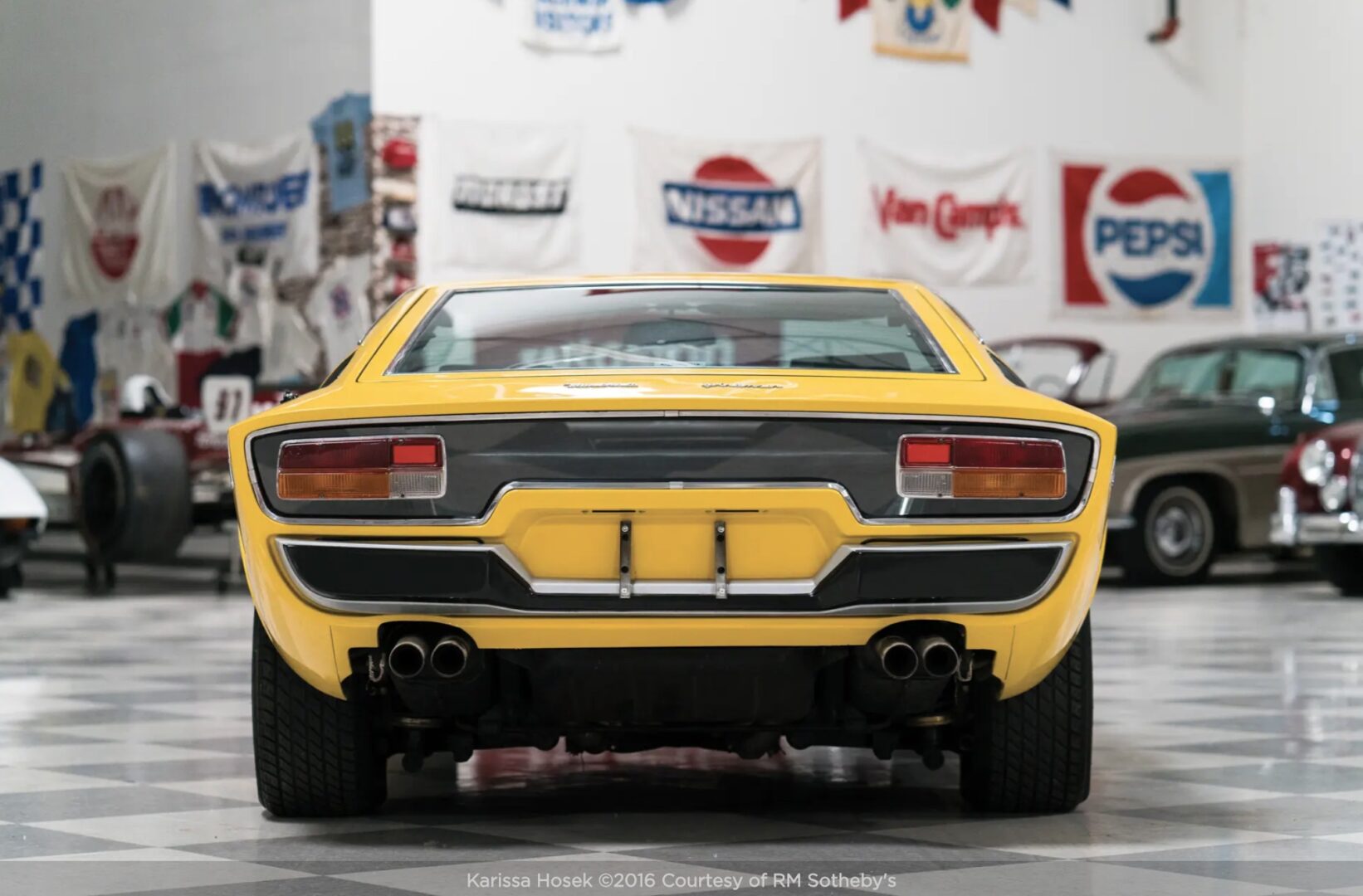
Something Old
Under the Khamsin’s steel body was an intriguing blend of old and new. The “old” was the 4.9-liter V8, a direct descendant from the Maserati racing engine first used in the 1956 450S sports racer. Even in the 1970s, it was still a modern and technical masterpiece. An aluminum cylinder block and heads, double overhead camshafts, dry-sump lubrication, and four Weber two-barrel carburetors were as exotic as a V8 got 50 years ago.
The sound alone made the engine a star, the dual exhaust emitting a rumble like an American muscle car at low speeds and a ferocious howl under acceleration. For the European-spec Khamsin, Maserati rated the V8 at 320 horsepower. Also muscle car-like was the engine’s 354 lb-ft. of peak torque, which bested the 4.4-liter V12 used in Ferrari’s 1968-1973 365 GTB/4 Daytona.
The U.S.-spec Khamsin was realistically closer to 280-290 hp, but that was still an impressive figure when carmakers struggled to meet emissions standards with the period’s carburetors and distributor ignition.
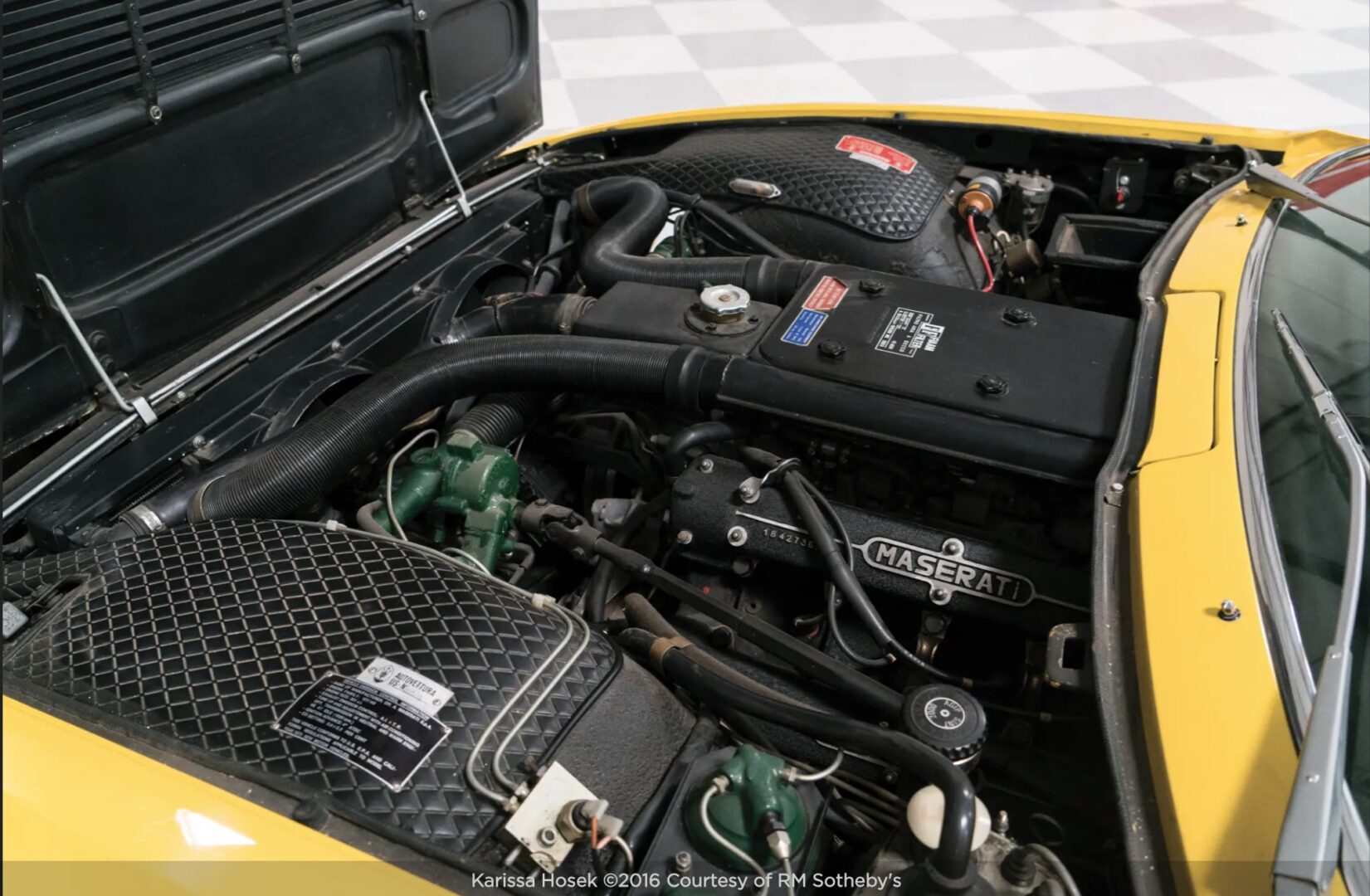
Something New
The “new” for the Khamsin was Maserati’s first independent rear suspension in a front-engine car. The Citroen influence showed in the use of that company’s speed-sensitive hydraulic steering, which was not merely for assistance, as in other cars, but rather provided full operation of the steering mechanism. The Khamsin also employed Citroën’s hydropneumatics for power-assisted brakes, the assisted clutch, pop-up headlight buckets, and even the driver’s seat height adjustment.
The Khamsin offered the choice between a five-speed manual transmission and a three-speed automatic.
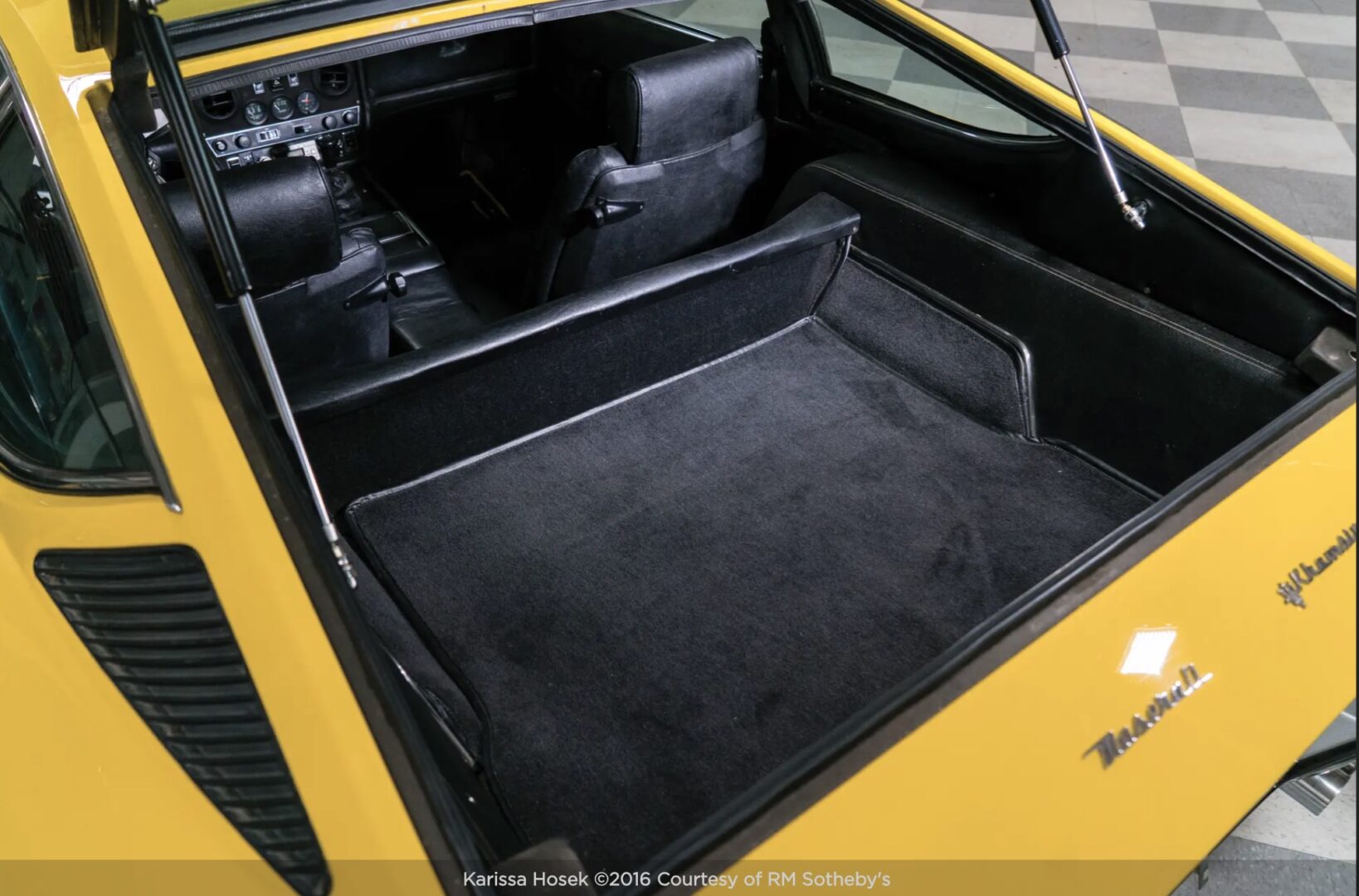
A Star in Anyone’s Book
Though it was a stunner in the Maserati GT tradition, the Khamsin would not find the same level of success as the two models it had replaced. Of the 430 made through 1982, just about 135 were officially sold in the U.S. In comparison, Maserati made 1,300 Ghiblis from 1967-1973 and about 1,100 Indys from 1969-1975.
The 1975 Maserati Khamsin illustrating this story had about 19,000 original miles when it was sold at the RM Sotheby’s Monterey auction in 2016 for $154,000. The car had been sold new in Los Angeles. “Jay Leno’s Garage” featured this Khamsin in 2013, and Jay seemed smitten with it. Watch his video, and you might be, too. If you find a Khamsin, we’d suggest investing in replacing the awful American-spec bumpers and taillights with the proper European setup.


